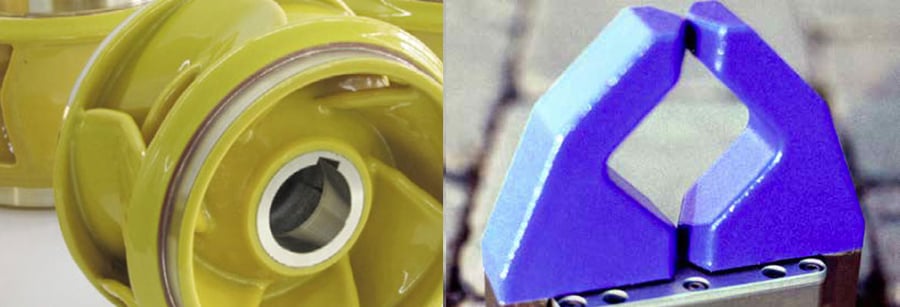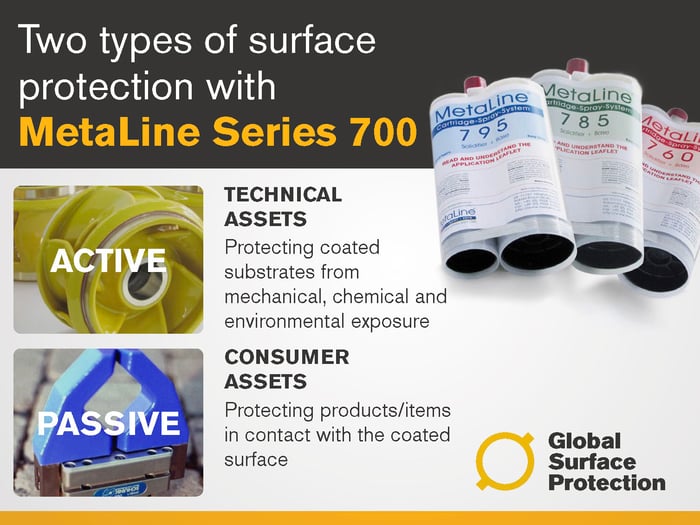It's commonly thought that coatings' purpose is to protect assets from different threats such as scratches, marks, abrasion, noise & discoloration, however coatings actually provide more benefits than a company would expect, and we are talking about protecting everything that works closely with our assets as well.

In order to protect effectively and accomplish its nature of protection, the coating industry must provide both active and passive protection. What do they mean?
Active or Passive Coating: which surface protection do I need?
Active coating surface protection
Active protection refers to the application of a coating designed to protect the asset from erosion, cavitation and/or corrosion etc. This form of application is more common and will be far more familiar to most people as a rudimentary form of this would be house paint.
This blog however will focus on a more robust version of active protection in the form of thick barrier coatings used to protect assets in far more volatile environments such as mining, marine and industrial applications.
Active surface protection is simply the application of a protective barrier to isolate the item from mechanical, chemical and environmental exposure. Where it gets more complex is which coating is the best suited for which application.
Some things to take into account when making this decision are:
- Size and shape of aggregate particles,
- Chemical composition of contacting liquids,
- Temperature the coating will be operating in and
- The impact angle of the aggregate particles.
In Global Surface Protection, no matter the answer to the above questions, we have an extensive range to suit all applications to ensure the active surface protection of your assets.
In these components, MetaLine 785 is the first choice for cavitation, and wear protection.
Passive Coating Surface Protection
Passive coating protection refers to the application of a coating that is designed to protect not the item itself but all foreign items that come into contact with it.
Pharmaceutical and other automated industries lose considerable amounts of profit on defective items caused by impact or “scuffing” resulting in the sold item being damaged or blemished and becoming unsellable.
Passive coating protection requires a soft coating that will absorb impact rather than deflect. This is where elastomeric coatings truly shine above traditional harder coatings such as epoxies, Polyurea’s and ceramic based coatings.
Therefore, our MetaLine 700 series is a Polyurethane that combines elastomeric properties of rubber with sprayability and seamlessness, ensuring minimal adhesion failure. The inherent “memory effect” of a sprayable coating ensure there is no tension to the bonded surface resulting in far less adhesion issues if any.
A company using automation can prevent product damage by using MetaLine 700
Why not Polyurea, if it’s cheaper and an elastomeric type?
Polyurea are elastomers where urethane groups have been exchanged for urea groups. This exchange is primarily done for cost reasons and results in a far lower response rate once impacted. A lower response rate in an elastomeric result in less absorbing and more deflecting characteristics which over time can damage the items that the coating is supposed to protect.
The surface finish is also very important when deciding on a passive protection coating. Some require the coating to be “grippy” like in robotics and automotive systems, while some require a “non-stick” finish to promote movement.
When choosing the right coating type for your project’s needs, you will have to consider resources, cost, and time. This is where consulting with a coating professional will be important, as there are often many variables involved.
Get in touch with our team, today.


